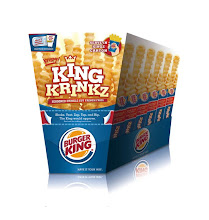
• The current epidemic of obesity has inspired what some might characterize as a witch hunt mentality with blame going to a wide and growing list of “villains,” including the fast food industry, high-fructose corn syrup, TV and school lunches. Now researchers from the
Mount Sinai School of Medicine think they may have found a clue: endocrine disruptors such as
phthalates used in food packaging. Kids in New York City’s East Harlem are 3x more likely than other children in the U.S. to be overweight, and perhaps not coincidentally high levels of these chemicals have turned up in urine samples. The researchers think the mechanism for promoting obesity may result from disruptions in hormones controlling growth and development. A study of 400 girls found the heaviest had the highest concentration of phthalates metabolites in samples of urine. A second study of East Harlem residents 6-8 years old showed higher levels of phthalates than the national average. Phthalates are primarily used as
plasticizers in
polyvinyl chloride (PVC) and
polyvinyliden chloride (PVDC) polymers to increase flexibility in a variety of food packaging products, including films. The
US Food and Drug Administration (FDA) is conducting research into phthalates and has said “there are no studies in humans that are adequate to serve as the basis for regulatory decision-making.” Not exactly a ringing endorsement of the chemical’s safety.
• Alfalfa sprouts are the latest produce item to be infected with salmonella with 7 outbreaks across 35 states. Will it ever end?
• Other chemicals on the scientific community’s radar screens are perfluorinated chemicals (PFCs), found in grease-resistant microwave popcorn bags and pizza boxes which has been linked to infertility, and especially, bisphenol A (BPA). BPA is component of polycarbonate plastic and epoxy resins used in the manufacture of reusable beverage containers (e.g., infant formula bottles) as well as the linings to soda cans. Green Century Capital Management, an investment group that targets environmentally-friendly companies for its financial services clients, has issued a report on 20 large publicly-traded manufacturers denouncing their inaction in removing BPA or in implementing meaningful reductions. Most baby bottle manufacturers have vowed to phase out BPA usage, but only for bottles sold in the U.S. Of the fourteen companies queried by Green Century that responded, only four had implemented alternative formulations with less BPA, and only one had found a substitute. Hain Celestial, Heinz, and Nestle all received top scores. The other companies contacted included Campbell Soup, Coca-Cola, ConAgra, Chiquita, Dean Foods, Del Monte, General Mills, Hershey, Hormel, J.M. Smucker, Kellogg, Kraft, McCormick, PepsiCo, Sara Lee, Sysco, and Unilever. Chemical industry lobbyists concede that “small” amounts of BPA leach into foods and beverages from polycarbonate bottles and can liners, but so far the National Institute of Health (NIH) has not shown more than “some concern” about the chemical and that only for its possible deleterious effects in baby bottles.
• Acrylamide, a chemical that has been bedeviling potato chip and French fries makers, got a bit of a pass with the release of a study of 120K Dutch men and women that uncovered no increase in lung cancer rates in men and a decrease among women. Acrylamide forms during high-temperature cooking processes, and has been linked in some studies to certain cancers. The substance is also present in coffee and baked goods, including bread and cookies. Animal studies have shown acrylamide to be a carcinogen; human studies have shown some non-conclusive links to and renal, ovarian and endometrial cancers. But a lawsuit by the California Attorney General has led to a consent agreement from Yum! Brands, owners of KFC, to list the carcinogenic danger from French fries in restaurants. Several snack food companies and restaurant chains were defendents in the suit, and are dealing with the fallout from it.
• French writer, Marcel Proust may have just been hungry: a new study by researchers from the University of California, Irvine published in the Proceedings of the National Academy of Sciences says when we eat foods rich in fat, our brains memorialize the experience and generate cravings later on. Damn. Apparently the small intestines transform oleic acids from fats into the compound oleoylethanolamide (OEA), which then sends our signals of satiety to the amygdala, the portion of the brain that controls our memory of emotional events. Scientists think this process helped our ancient ancestors remember their favorite outdoor restaurants on the vast plains of Africa, or whether a Mastodon-burger made them feel better than a salad. Since we no longer hunt and gather on those vast plains, the overabundance of fatty foods results in cravings that bring on obesity. And here you thought that dream you had of a big dish of chocolate ice cream was a moment of weakness and not a deep-seated memory.
• A study of almost 40K Swedish men aged 45-79 followed from 1998-2004 showed the eating fatty fish containing omega-3 fatty acids slashed their risk of heart failure. Heart failure occurs when the organ cannot pump enough blood, and is the leading cause of hospitalization in men over 65. Symptoms include fatigue and weakness, difficulty walking, rapid or irregular heartbeat, and persistent cough or wheezing. Omega-3 fatty acids include DHA (docosahexaenoic acid) and EPA (eicosapentaenoic acid), and have been linked to a wide-range of health benefits ranging from lowered risk for cardiovascular disease (CVD) and some cancers, all the way to improved joint movement and even better moods.
• As electronic prescription companies jockey for dominance in this fast-growing retailing segment, Allscripts ranked #1 for the second straight year. Their 203% increase in the number of end-users is somewhat deceiving, since the category hardly existed a few years ago. But with a provision in the American Recovery and Reinvestment Act that will pay physicians $44K-$64K over the next 5 years to deploy and demonstrate “meaningful use” of a certified Electronic Health Record system, the category is attracting big players like CVS and Wal-Mart (Physicians who fail to implement the process after 2014 will be penalized). Benefits from electronic prescriptions are thought to be eliminating the storied illegible doctor handwriting, as well as alerting health care professionals about dangerous drug interactions, incorrect dosages or patient-specific problems such as previous bad reactions. Advocates insist the process will make the health care system more responsive to patient needs and lower costs, though skeptics add that a huge Federal feeding trough is being implemented, and the response by the large retailers would seem to confirm that assessment.
Excerpted from BSLG's weekly subscription news reader service Food Business News. To subscribe or for information about licensing, contact Broad Street Licensing Group (tel. 973-655-0598)

.gif)



















